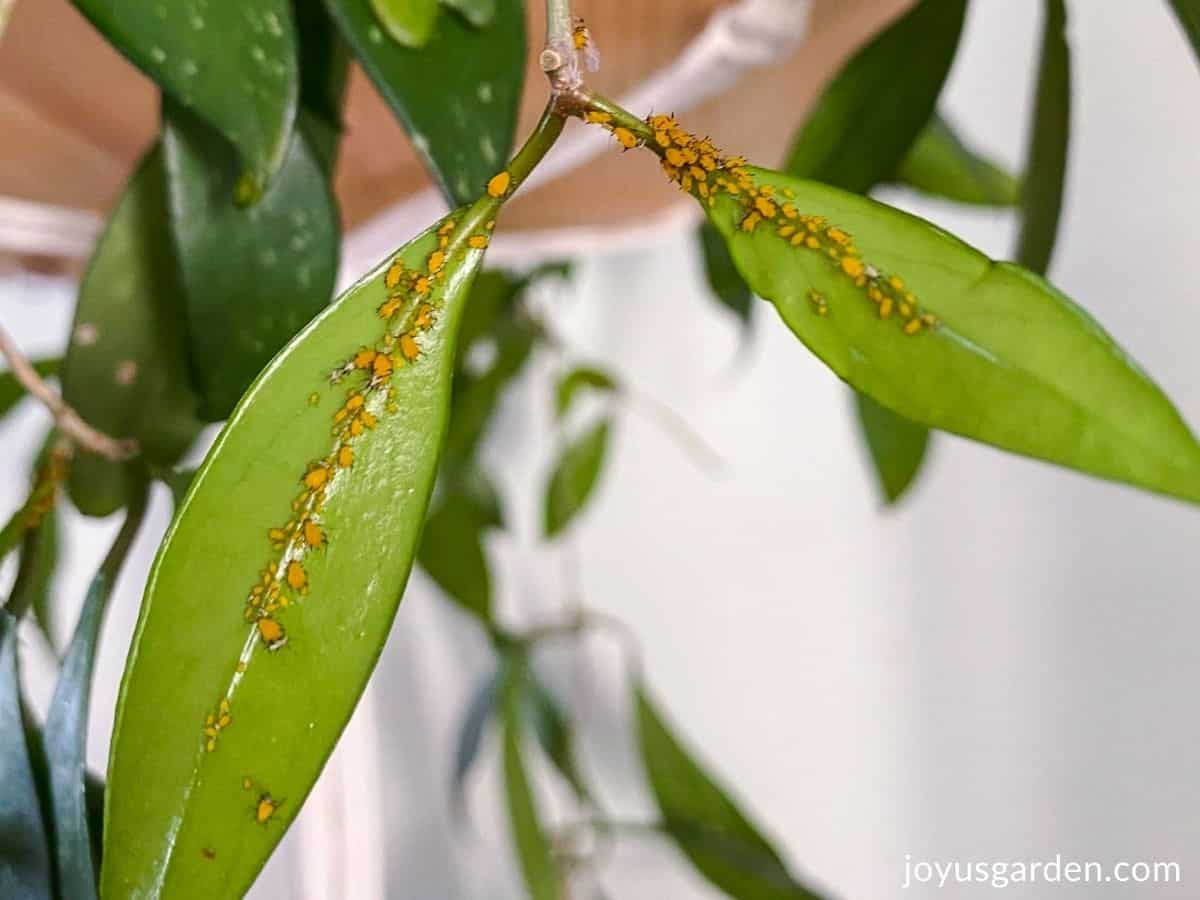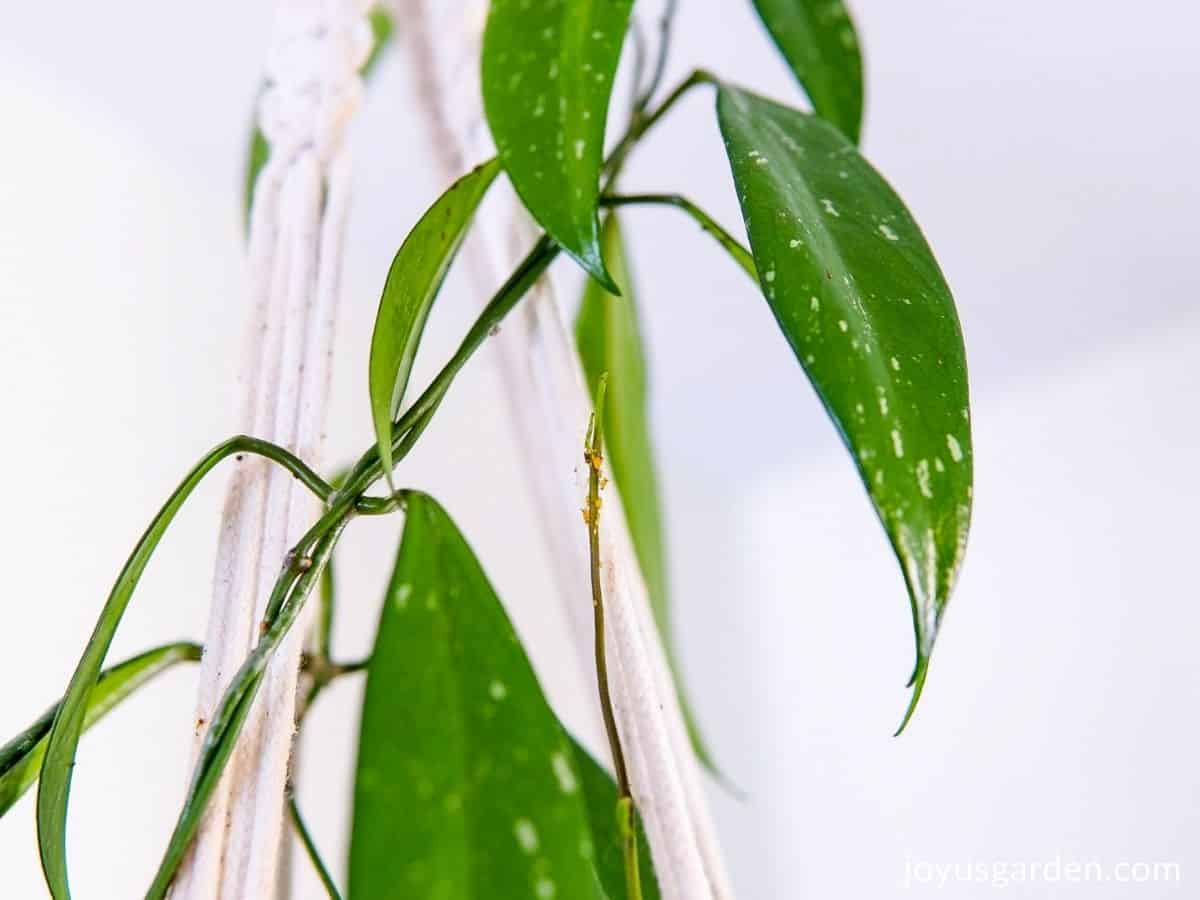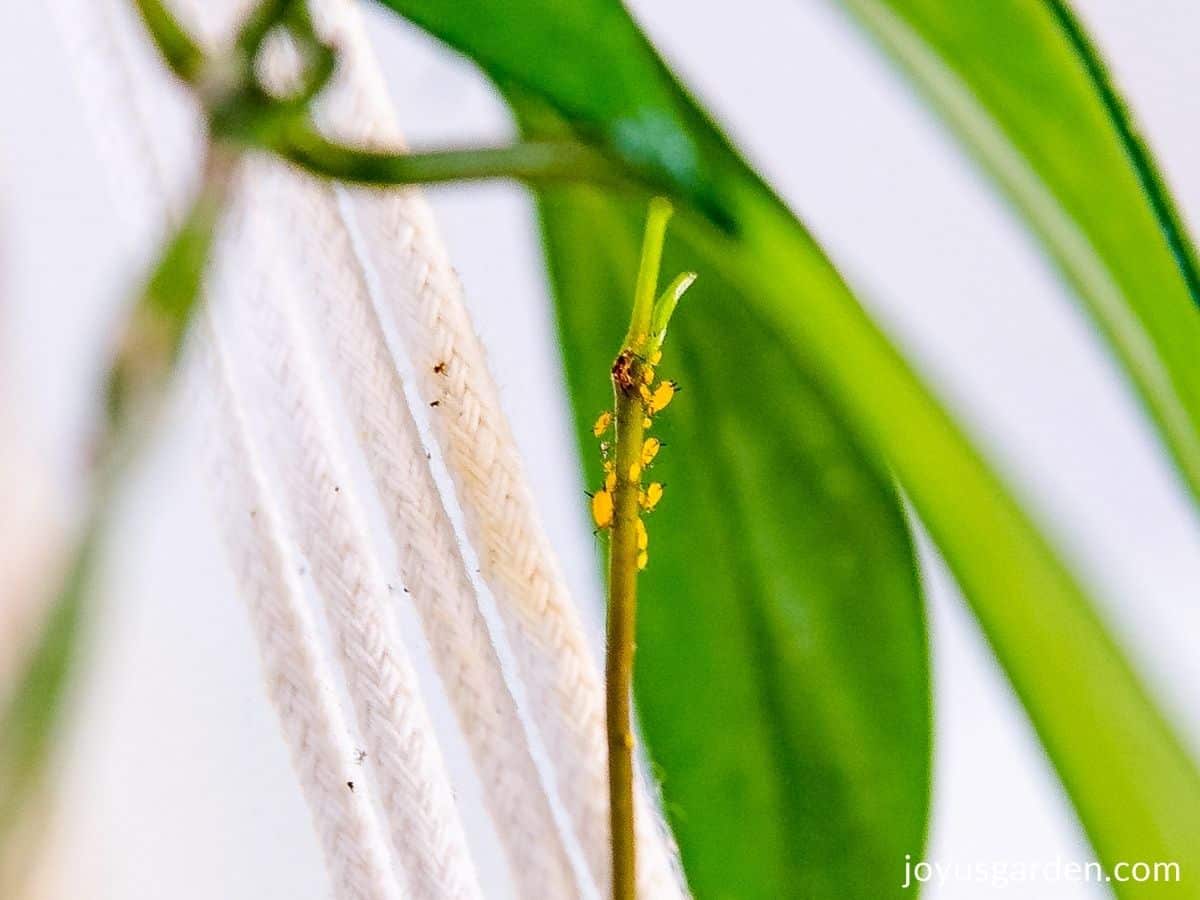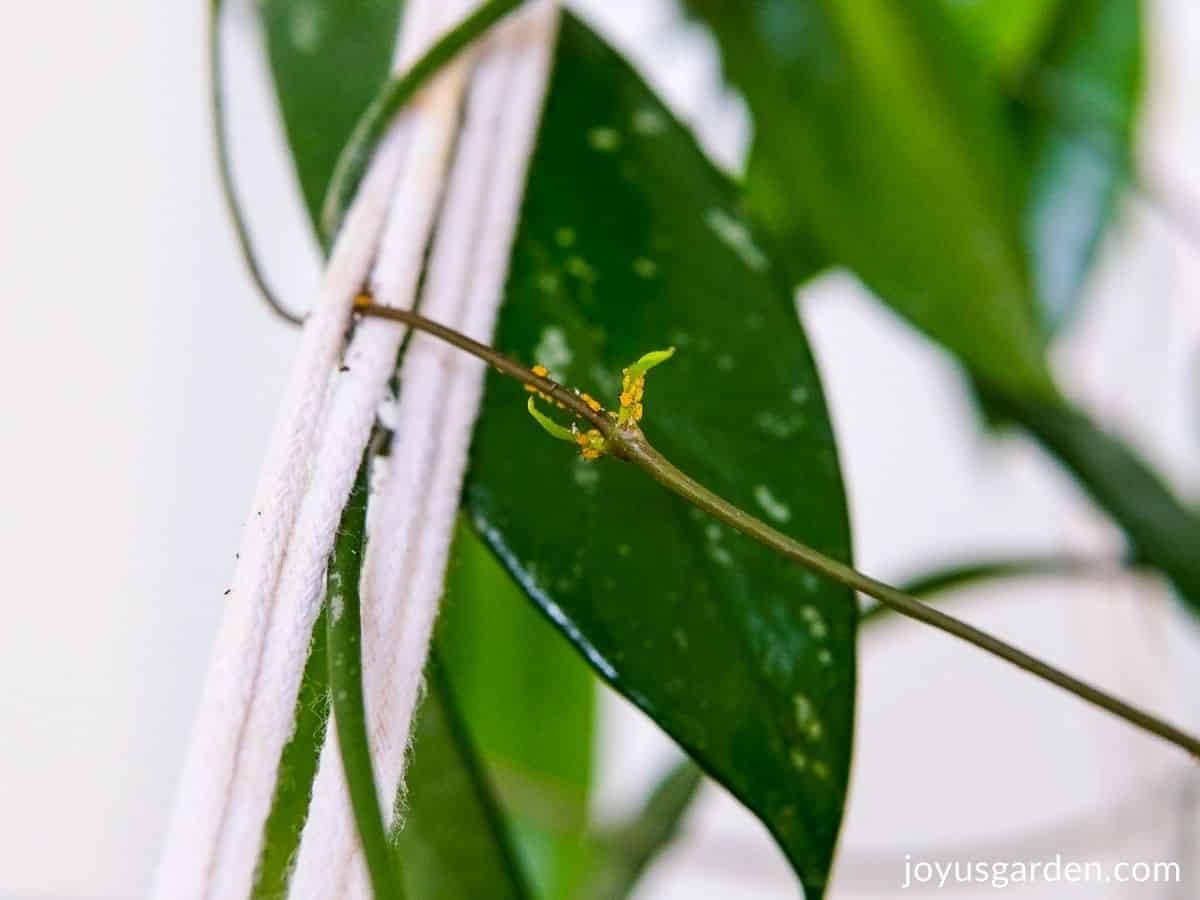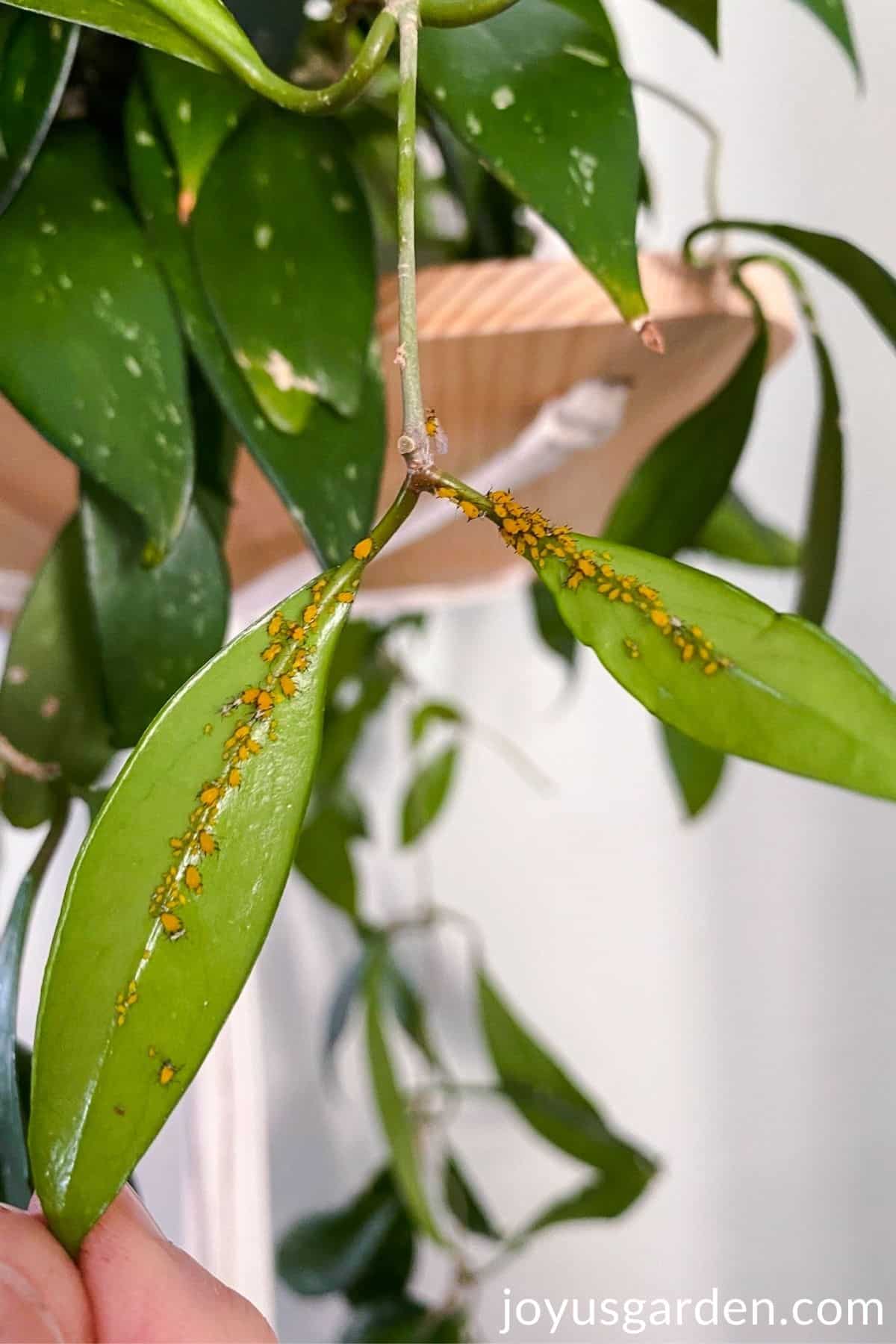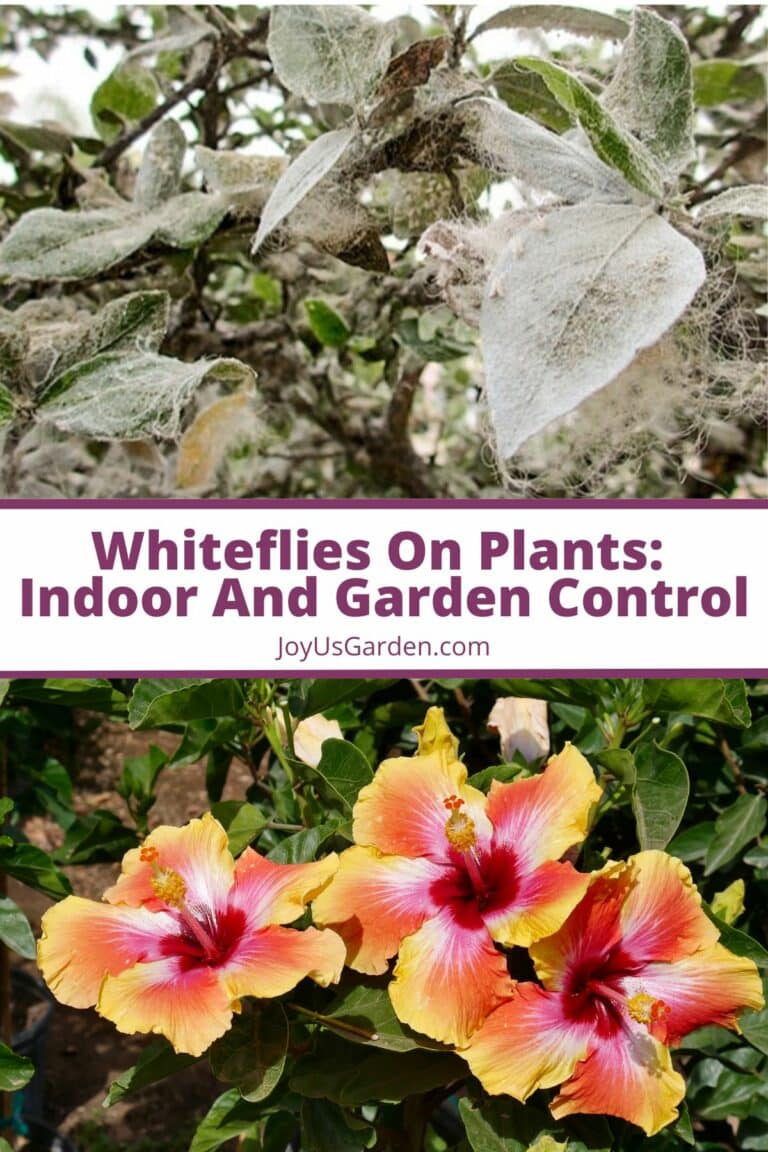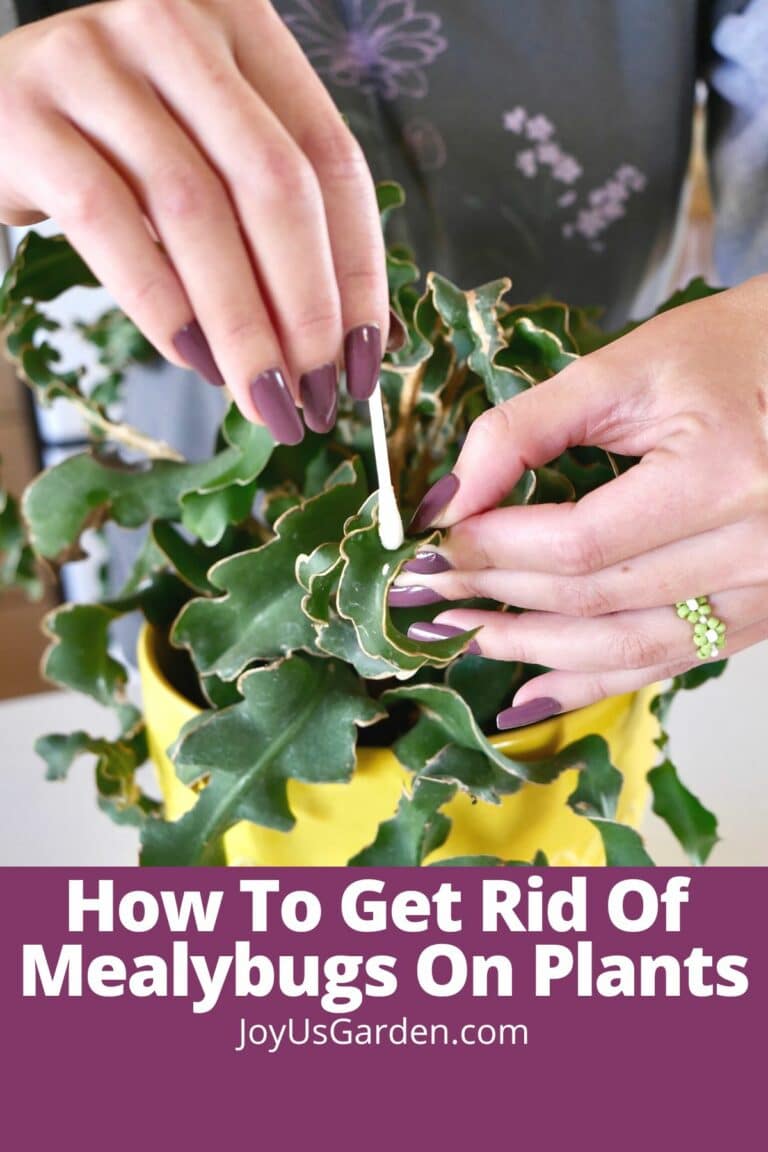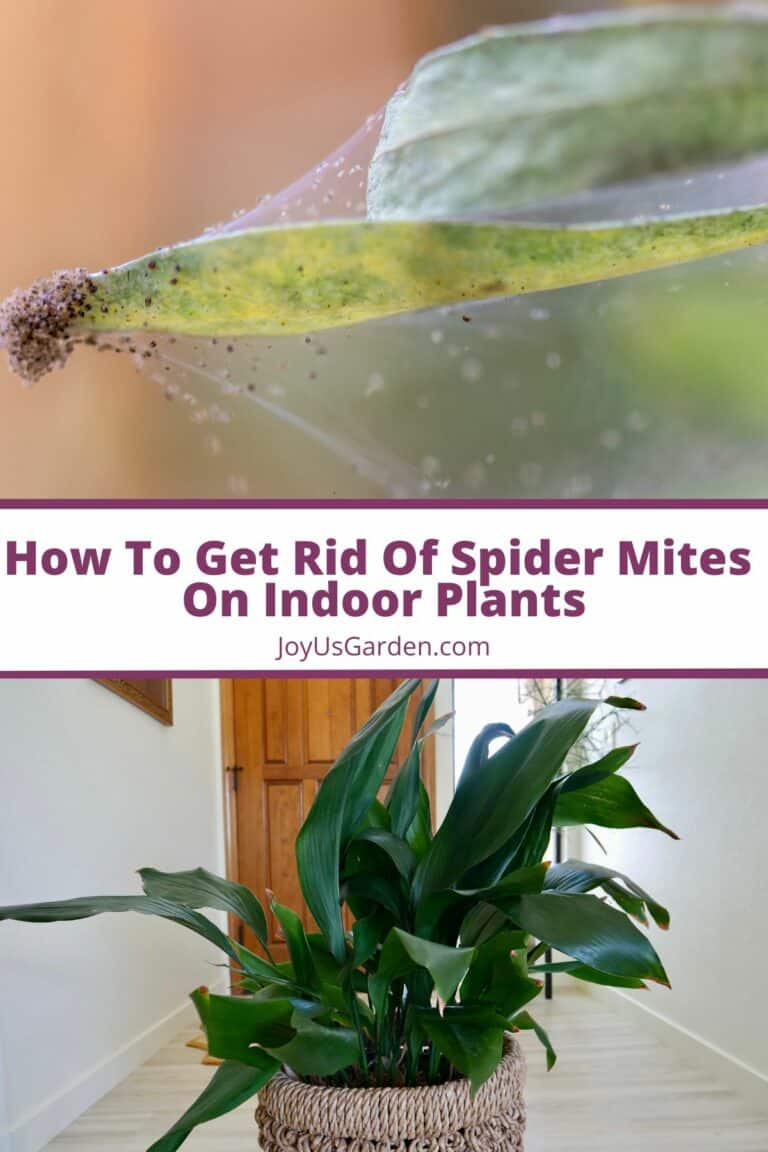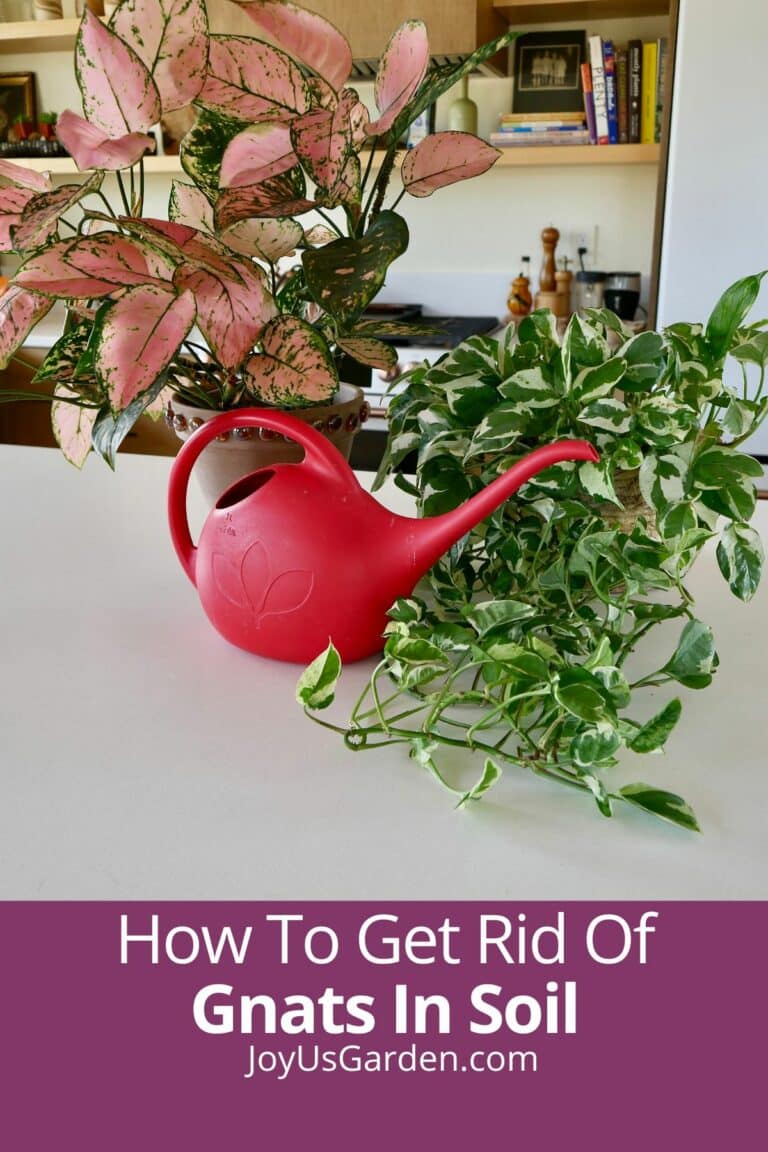How to Get Rid of Aphids Naturally
Are you dealing with an aphid infestation in your home? These tiny plant pests love to live and eat on the stems and leaves of your plants. There are a few things that you can do to get rid of aphids which I’ll go over in detail in this guide.
If you have plants, they’ll most likely get aphids at some point. Even though they can cover a plant, they’re not too hard to get rid of. The key is to catch them early, and repeat spray. Out of the 60+ houseplants I have, only two of my hoyas got infested.
This post and video center around me spraying my hoya plant. Everything here applies to ornamental and edible plants also.
What Are Aphids?
Aphids are small, soft-bodied tiny insects that feed by sucking the nutrient-rich liquids out of plants. They can weaken plants significantly, damaging foliage, flowers, and fruit. They’re a common pest that reproduces quickly, so it’s a good idea to get the aphid populations under control before the female aphids reproduce in large numbers.
Aphids are extremely small, often nearly invisible to the naked eye, and can be found on a variety of plants. Some aphids have a waxy or woolly coating. They have pear-shaped soft bodies with long antennae. The nymphs (young aphids) look similar to the adults.
You might notice an aphid infestation on both indoor and outdoor plants. They’re common garden pests that can make an appearance in your flower garden, vegetable garden, and on your fruit trees. My bougainvillea and mint plant got aphids two years ago. Last year and this year it was 2 of my hoya houseplants.
Aphids come in many colors such as green, orange, yellow, brown, red, and black.
You might find this Guide To Aphids & Mealybugs & How To Control Them to be helpful.
When Are Aphids Most Active?
It depends on the climate zone you’re in, but aphids most commonly appear in the early spring into summer. I live in Tucson, Arizona where winters are mild so they can make an appearance in late winter here.
Where Do I Look For Aphids?
It’s good to check the entire plant but there are a few places they prefer to hang out. You’ll often find them on the stems, especially on the tender new growth. Also, the younger leaves as well as the undersides of the leaves. Anywhere that the plant tissue is softer so it’s easier to suck out the plant juices.
Aphids are easy to spot with the naked eye unless they’re green aphids. These tend to blend in with the foliage.
Another clue that aphids might be present is sooty mold on the leaves. It appears on the sugary substance secreted from the aphids. This black mold makes the leaves really sticky and discolored. Once the aphids are gone, it’ll be gone too. I wash it off after treatment is complete.
How To Get Rid Of Aphids Video Guide
How to Get Rid of Aphids Naturally
Natural Ways To Control Aphids
Whatever you choose to use, it’s best to spring into action as soon as you see aphids because a few can turn into an infestation fast.
There are a few ways to do it. If it’s just a small infestation, a strong spray of water with the garden hose or kitchen faucet will do the trick. This is the method I use on my garden plants. Just make sure it’s not too strong of a blast or you could blow the plants away too!
Next is to use spray with a natural insecticide like neem oil, horticultural oil, or insecticidal soap. You can buy any of them ready to use, or as a concentrate to mix with water in a spray bottle. I tried insecticidal super soap for my aphid problem this season. The good news is that it got rid of the aphids with just two rounds of spraying.
Another natural method is to concoct a homemade soap spray. There are many recipes you can find online. A common one is a mixture of water, mild dish soap, and cayenne pepper.
The last way I know of is with natural predators. These are beneficial insects that plain and simply put eat the adult aphids. Lady beetles, green lacewings, and parasitic wasps are all predatory insects that will kill aphids but there is controversy around buying them. It’s much better to attract them to your garden.
One thing to note regarding these beneficial bugs is that once they devour the aphids, they don’t stick around. They move on to another garden in search of food.
I avoid the use of pesticides in my garden because I want to protect myself, the environment, and all the many creatures that inhabit and enjoy my garden!
What To Spray To Get Rid Of Aphids (what I used this time & in the past)
As you read above, there are many options for you to choose from. Whatever you use, be sure to follow the directions specified. Even something like apple cider vinegar can burn a plant if the concentration is too high or you spray too often.
This year I used a product that was new to me. Insecticidal super soap not only kills aphids but 30 other insects too. It worked really well, and as I write this post 2 months after filming the video (yes, I’m a bit behind!), there’s not an aphid in sight.
I was a professional gardener in the San Francisco Bay Area for almost 20 years. I’ve also used insecticidal soaps, horticultural oils, and neems oils. I use the plural because there are quite a few brands on the market of each.
In terms of homemade, here’s the way I’ve always made a soap/oil spray. Mix 1 tablespoon mild dish soap or Dr. Bronner’s, 1 tablespoon vegetable oil, and 1 cup water. This works on mild infestations. You want to repeat spray 2 or 3 more times in 7-day intervals.
For aphids on my houseplants, I take them to the sink and give them a gentle blast with water. I let the plant dry completely and then spray thoroughly with a mixture of approximately 1/4 vinegar (I routinely use white but have used apple cider also) and 3/4 water.
Repeat again in 7 to 10-day intervals 1-2 more times as needed. Easy does it with the vinegar – using a concentration of too much or spraying too often can burn the foliage. And, I wouldn’t use this mixture on seedlings or young plants for that very reason.
Most plants that I know of can be sprayed with these products/DIY recipes but you might want to do a bit of research on both the plant and the product 1st to make sure.
How Many Times To Spray
It depends on what you’re spraying with, but 2 or 3 rounds will usually get them under control. I suggest waiting 7-10 days in between each spray as per the instructions on the bottle or the recipe.
It’s easy to miss some aphids in the first round especially if the plant is dense like my hoya. Plus, they lay eggs like crazy so you’re going to have to do repeated spraying to get rid of those too.
How To Spray To Control An Aphid Infestation
It’s best to watch the video above so you can see how I spray.
This is very important. You don’t want to lightly spray the plant and call it a day. You need to hit every place on the plant with whatever spray you’re using to have it really be effective.
My larger hoya is very thick so I made sure to hit the top, middle and bottom layers of the plant.
You want to pay special attention to the undersides of leaves as well as the tender plant parts like the ends of the new stems and the young leaves. This fresh growth is very juicy so the aphids can easily have a hay day with that.
The undersides of the leaves provide protection so not only aphids but many other plant pests like mealybugs, spider mites, thrips, and whiteflies like to hang out there.
By the way, I wear rubber dishwashing gloves to protect my hands and wrists when I’m spraying. I recommend you do the same.
It does take a while (maybe 10-15 minutes) on a plant like my larger hoya which has a lot of foliage. If you want to get rid of aphids, then it’s what you need to do. Otherwise, they’re just going to come back and be even harder to get rid of.
If you’re spraying inside and can’t take your plant(s) to the sink, shower, bathtub, or outside, then you’ll want to protect your floors and walls before you begin.
If spraying outside, avoid doing it on a windy day. And, you don’t want to spray a plant in the full sun. Make sure it’s shaded during the process and for a few hours after while the spray on the plant dries.
If you’ve moved your inside plants outside to spray, don’t expose them to any hot, direct sun as they could burn. They’re used to the protection of the roof and walls after all!
Regardless of where you’re spraying, don’t do it to a plant that’s stressed, ie overwatered or underwatered.
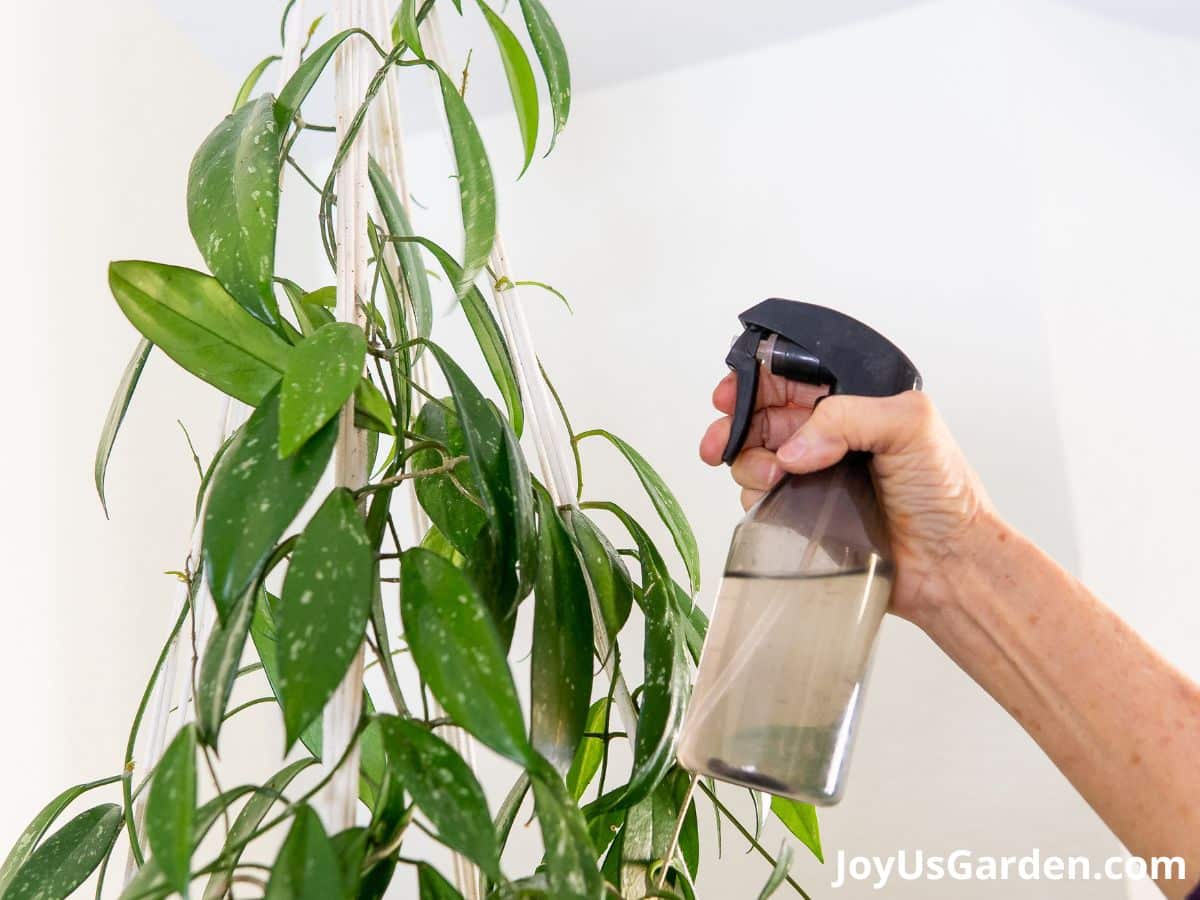
After the aphid spraying is complete
When the last round of spraying is complete, I let the plant dry and sit for a few days out of the sun.
There will be some dead aphids remaining on the plant (especially under the leaves) so I hose or spray it off with water to get rid of them. Also, there could still be some sticky substance created by the nectar residue and the sooty mold on the leaves. Washing it off makes the plant all clean and happy as can be!
My experience getting rid of aphids this year
I wanted to add this in because out of the 60+ indoor plants I have, only 2 hoyas got aphids. I have a few succulents and an epiphyllum with mealybugs, but that topic makes for a whole other blog post. Pests and plants go hand in hand!
The smaller hoya was in a pot on a chest in the guest room. I was easily able to get rid of its aphids by spraying the plant with water in my kitchen sink. I sprayed it 2 times about 9 days apart and after the 2nd spray, the aphids appeared to be gone. I waited another week and sprayed it again in case any eggs remained.
My larger hoya was in sitting on a macrame shelf with some of its stems twining up the hangers. I tried spraying it with water and vinegar while hanging, but because the plant is so dense and has so many stems, I wasn’t getting control of the aphids.
By now it was the end of April. That’s when I decided to take the plant down and spray it outside giving the super soap a try for the 1st time. I took the whole thing down, hanging shelf and all, to spray outside.
My covered back patio has a north exposure so it was a great place to spray. I put a double layer of sheets over the patio table to protect things because I had to drench the plant well in order to thoroughly spray. I left the plant outside totally protected from the sun for the repeat treatments.
About 10 days later (now into May) I did the 2nd round of spraying. 8 days later I inspected the plant and was happy to see not a single living aphid. For good measure, I did a light spray on the undersides of the leaves and in the crevices of the new growth to make sure to hit any eggs that might be remaining.
I let the plant sit outside for a few more days to dry off and absorb all that was sprayed on. Then, I took it over to the side of the house and gave it a good spray (not too forceful!) with the garden hose to get rid of any dead aphids and any remaining nectar or sooty mold still on the leaves.
I let the plant dry off and then brought it back into the dining room and hung it up.
It’s mid-July as I write this and the plant is aphid free and clean as can be!
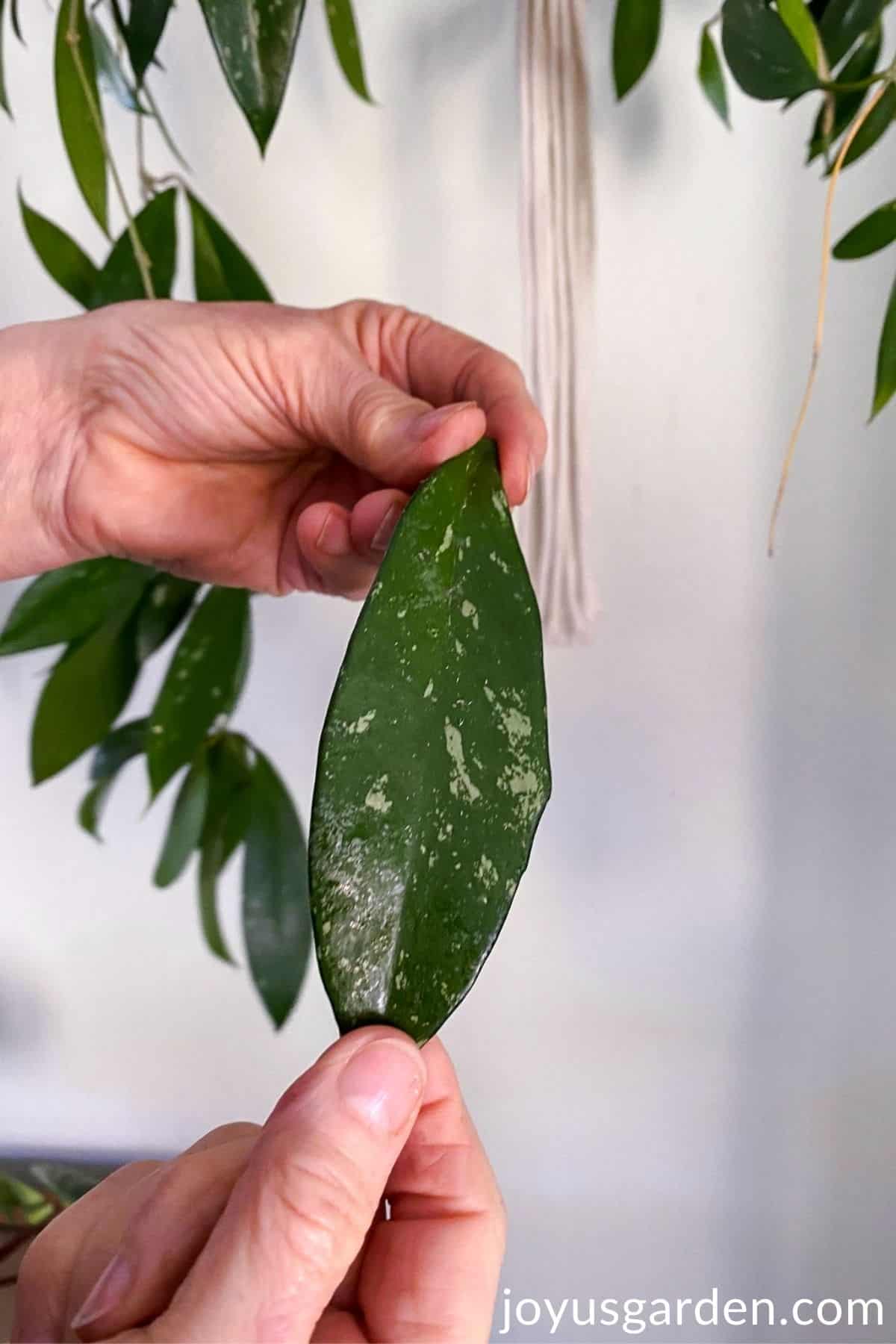
Conclusion:
You’ll be able to get rid of aphids one year, but new ones may make an appearance the next year. As far as permanently goes, the answer is maybe. There are certain houseplants and plants in the garden that they love. They’ll often show up again, like with my hoya, but now you know what to do and how to effectively spray.
The best way to control or get rid of aphids in terms of the product or recipe you use is the one that works best for you. Treating your plants and getting rid of aphids in a single season doesn’t mean you won’t get an infestation next year. If you take action and treat them before it gets too bad, you’ll get them under control in no time.
Happy gardening,

